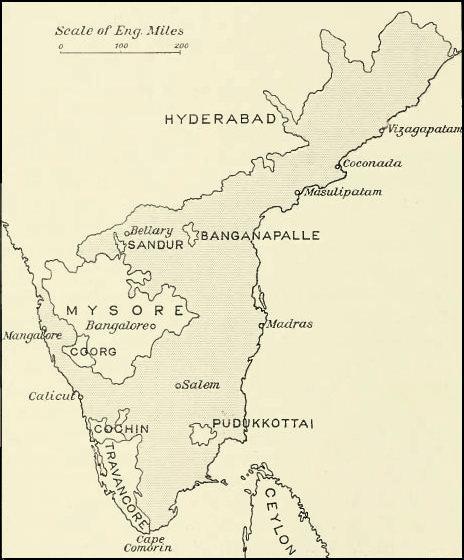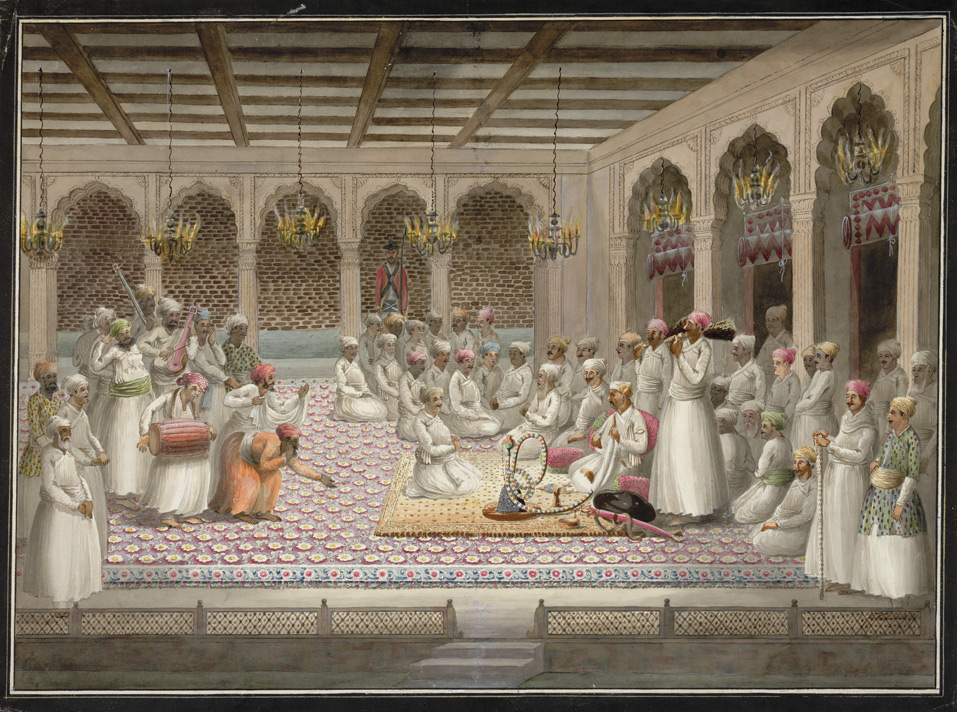|
Naqdi Dynasty
The Naqdi dynasty, of Persian origin, were Nawabs who ruled Banganapalle and Chenchelimala from 1769 to 1948: see Second Dynasty of Banganapalle Nawabs. They trace their descent from one Seyyed Mohammad Khan Razavi, who served as Vizier to Shah Safi Sam Mirza ( fa, سام میرزا) (161112 May 1642), better known by his dynastic name of Shah Safi ( fa, شاه صفی), was the sixth Safavid shah (king) of Iran, ruling from 1629 to 1642. Early life Safi was given the name Sam Mirza when ... of Persia in the 17th century. Rulers Nawabs of India Mughal Empire {{india-hist-stub ... [...More Info...] [...Related Items...] OR: [Wikipedia] [Google] [Baidu] |
Persian People
The Persians are an Iranian ethnic group who comprise over half of the population of Iran. They share a common cultural system and are native speakers of the Persian language as well as of the languages that are closely related to Persian. The ancient Persians were originally an ancient Iranian people who had migrated to the region of Persis (corresponding to the modern-day Iranian province of Fars) by the 9th century BCE. Together with their compatriot allies, they established and ruled some of the world's most powerful empires that are well-recognized for their massive cultural, political, and social influence, which covered much of the territory and population of the ancient world.. Throughout history, the Persian people have contributed greatly to art and science. Persian literature is one of the world's most prominent literary traditions. In contemporary terminology, people from Afghanistan, Tajikistan, and Uzbekistan who natively speak the Persian language are know ... [...More Info...] [...Related Items...] OR: [Wikipedia] [Google] [Baidu] |
Nawabs
Nawab ( Balochi: نواب; ar, نواب; bn, নবাব/নওয়াব; hi, नवाब; Punjabi : ਨਵਾਬ; Persian, Punjabi , Sindhi, Urdu: ), also spelled Nawaab, Navaab, Navab, Nowab, Nabob, Nawaabshah, Nawabshah or Nobab, is a Royal title indicating a sovereign ruler, often of a South Asian state, in many ways comparable to the western title of Prince. The relationship of a Nawab to the Emperor of India has been compared to that of the Kings of Saxony to the German Emperor. In earlier times the title was ratified and bestowed by the reigning Mughal emperor to semi-autonomous Muslim rulers of subdivisions or princely states in the Indian subcontinent loyal to the Mughal Empire, for example the Nawabs of Bengal. The title is common among Muslim rulers of South Asia as an equivalent to the title Maharaja. "Nawab" usually refers to males and literally means ''Viceroy''; the female equivalent is "Begum" or "''Nawab Begum''". The primary duty of a Nawab was ... [...More Info...] [...Related Items...] OR: [Wikipedia] [Google] [Baidu] |
Chenchelimala
Sanjamala or Sanjemula is a village in Nandyal district of Andhra Pradesh, India India, officially the Republic of India (Hindi: ), is a country in South Asia. It is the seventh-largest country by area, the second-most populous country, and the most populous democracy in the world. Bounded by the Indian Ocean on the so .... It is located in Sanjamala mandal. There is a temple called Venkateswara Swamy Temple. There is only one government school. Its old name is Chenchelimala. References {{reflist Villages in Nandyal district ... [...More Info...] [...Related Items...] OR: [Wikipedia] [Google] [Baidu] |
Nawab Of Banganapalle
Banganapalle State was one of the princely states of India during the period of the British Raj. The state was founded in 1665 and had its capital in Banganapalle. Its rulers were Shia Muslims and the last one signed the accession to the Indian Union on 23 February 1948. See also *Nawab of Masulipatam *Masulipatam *Nizam of Hyderabad The Nizams were the rulers of Hyderabad from the 18th through the 20th century. Nizam of Hyderabad (Niẓām ul-Mulk, also known as Asaf Jah) was the title of the monarch of the Hyderabad State ( divided between the state of Telangana, Mar ... * Formation of Andhra Pradesh References {{Authority control Princely states of India Muslim princely states of India Shia dynasties History of Andhra Pradesh Kurnool district 1665 establishments in India 1948 disestablishments in India ... [...More Info...] [...Related Items...] OR: [Wikipedia] [Google] [Baidu] |
Vizier
A vizier (; ar, وزير, wazīr; fa, وزیر, vazīr), or wazir, is a high-ranking political advisor or minister in the near east. The Abbasid caliphs gave the title ''wazir'' to a minister formerly called ''katib'' (secretary), who was at first merely a helper but afterwards became the representative and successor of the ''dapir'' (official scribe or secretary) of the Sassanian kings. In modern usage, the term has been used for government ministers in much of the Middle East and beyond. Several alternative spellings are used in English, such as ''vizir'', ''wazir'', and ''vezir''. Etymology Vizier is suggested to be an Iranian word, from the Pahlavi root of ''vičir'', which originally had the meaning of a ''decree'', ''mandate'', and ''command'', but later as its use in Dinkard also suggests, came to mean ''judge'' or ''magistrate''. Arthur Jeffery considers the word to be a "good Iranian" word, as has a well-established root in Avestan language. The Pahlavi ''viči ... [...More Info...] [...Related Items...] OR: [Wikipedia] [Google] [Baidu] |
Shah Safi
Sam Mirza ( fa, سام میرزا) (161112 May 1642), better known by his dynastic name of Shah Safi ( fa, شاه صفی), was the sixth Safavid shah (king) of Iran, ruling from 1629 to 1642. Early life Safi was given the name Sam Mirza when he was born. He was the son of Mohammad Baqer Mirza, the eldest son of Shah Abbas I, and Dilaram Khanum, a Georgian wife. In 1615, Abbas had Mohammed Baqer killed, fearing he was plotting against his life. Over the next few years, the suspicious Abbas killed or blinded his other sons, leaving his grandson Safi heir to the throne. Reign Safi was crowned on 28 January 1629 at the age of eighteen. He ruthlessly eliminated anyone he regarded as a threat to his power, executing almost all the Safavid royal princes as well as leading courtiers and generals. He paid little attention to the business of government and had no cultural or intellectual interests (he had never learned to read or write properly), preferring to spend his time drinkin ... [...More Info...] [...Related Items...] OR: [Wikipedia] [Google] [Baidu] |
Husain Ali Khan Bahadur
Husain Ali Khan Bahadur was Nawab of Banganapalle between 1769 and 1783. He belonged to the Naqdi Dynasty. Birth Husain Ali Khan Bahadur was the elder son of Sayyid Muhammad Khan Naqdi, by his wife, Amat ul-Batul Khanum, daughter of Fazl Ali Khan II Bahadur. Life He entered the Nizam's service, rising to the rank of a mansabdar of 800 sowar and was promoted to 2,000 zat and 1,000 sowar. Later, he was recognised as successor to his maternal uncle. He was granted the personal title of ''Khan Bahadur'' on 11 February 1765. He succeeded as Jagirdar of Banganapalle on the death of his unmarried uncle on 7 April 1769. Later he entered the service of Hyder Ali, becoming a high-ranking officer in his armies. Death He died while returning to Banganapalle from Mysore on 26 August 1783. He was succeeded by his young son, Ghulam Muhammad Ali, with Ghulam's paternal uncle as regent. Titles held See also *Nawab of Carnatic *Nawab of Masulipatam *Nawab of Banganapalle Banganapall ... [...More Info...] [...Related Items...] OR: [Wikipedia] [Google] [Baidu] |
Nawab Sayyid Ghulam Muhammad Ali Khan I Bahadur
Nawab Syed Ghulam Muhammad Ali Khan I Bahadur Mansur-Ud-Daullah (died 1825) was twice Nawab of Banganapalle in India. The first time was between 1783 and 1784, as '' Jagirdar''. His second reign was from 1789 to 1820. His time saw many significant changes in the history of Banganapalle, most significant being the recovery through marriage of the Jagir of Chenchelimala. Biography He was eldest son of Sayyid Husain Ali Khan Bahadur. He succeeded on the death of his father as Jagirdar of Banganapalle, 26 August 1783. He reigned under the guardianship of his paternal uncle between 1783 and 1784. Fled with him to Hyderabad when Hyder Ali invaded and overran Banganapalle, 1784. Entered the Nizam's service and appointed to a mansab of high rank, losing the fingers of his right hand in battle against the Marathas. Recovered the jagir after his uncle defeated Tipu's forces under Muhammad Yusuf and Kutb ud-din at Tammadapalle before 21 September 1789, but preferred to reside in Hyde ... [...More Info...] [...Related Items...] OR: [Wikipedia] [Google] [Baidu] |
Nawab Sayyid Husain Ali II Khan Bahadur
Nawab Sayyid Husain Ali II Khan Bahadur abducted his father and succeeded him as Nawab of Banganapalle in 1822, a position he held for ten years until 1832. He was elder son of Nawab Sayyid Ghulam Muhammad Ali Khan I Bahadur, Jagirdar of Banganapalle, by his first wife, Najib un-nisa Begum Sahiba, only daughter of Nawab Sayyid Asad 'Ali Khan Bahadur, Jagirdar of Chenchelimala. He however proved to be a poor financial manager and began accumulating large debts. Several attempts by the government to introduce reforms proved fruitless, until exasperation resulted in his deposition in 1832. The government annexed Banganapalle to the Madras Presidency and the Nawab retired to Hyderabad on a pension. Finally the financial and administrative reforms having restored the state to solvency, the Governor of Madras-in-Council decided to return Banganapalle to him on 12 July 1848. He died shortly after without male heirs. He had two daughters, Imdad Husaini Begum Sahiba and Ruqiya Begum Sah ... [...More Info...] [...Related Items...] OR: [Wikipedia] [Google] [Baidu] |
Nawabs Of India
Nawab ( Balochi: نواب; ar, نواب; bn, নবাব/নওয়াব; hi, नवाब; Punjabi : ਨਵਾਬ; Persian, Punjabi , Sindhi, Urdu: ), also spelled Nawaab, Navaab, Navab, Nowab, Nabob, Nawaabshah, Nawabshah or Nobab, is a Royal title indicating a sovereign ruler, often of a South Asian state, in many ways comparable to the western title of Prince. The relationship of a Nawab to the Emperor of India has been compared to that of the Kings of Saxony to the German Emperor. In earlier times the title was ratified and bestowed by the reigning Mughal emperor to semi-autonomous Muslim rulers of subdivisions or princely states in the Indian subcontinent loyal to the Mughal Empire, for example the Nawabs of Bengal. The title is common among Muslim rulers of South Asia as an equivalent to the title Maharaja. "Nawab" usually refers to males and literally means ''Viceroy''; the female equivalent is "Begum" or "''Nawab Begum''". The primary duty of a Nawab was to ... [...More Info...] [...Related Items...] OR: [Wikipedia] [Google] [Baidu] |



